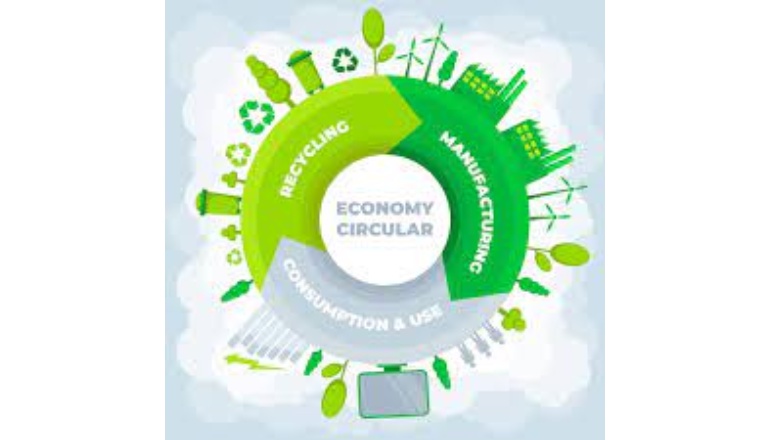India is marching toward being a circular economy.
India’s growth rate over the past few quarters has been roughly 7.4%. The country registered *7.6% growth in H12024 (Q1 7.8% and Q2 7.6% respectively). The RBI in the bi-monthly policy has revised the current FY growth to 7% from the earliest forecast.
Thanks to favorable economic policies, and a conducive environment, the country is today the fifth-largest economy in the world.
India demonstrated resilience and robust economic growth despite the COVID-19 pandemic and challenging global economic conditions, as per Circular Economy Catalyst.
India could potentially earn $45 billion from the circular economy by 2030. The private sector can significantly benefit from securing green investments. Additionally, these organizations are facing increased pressure from investors, consumers, and regulators to adopt pro-climate practices domestically and internationally. The government too is launching initiatives to increase public awareness and educate those involved in the ecosystem.
Ambitious target:
By 2050, India’s circular economy is expected to grow to $2 trillion, reshaping industries and boosting the world economy. India may eliminate single-use plastics by 2035, recycle two-thirds of all plastics used, and cut down on the quantity of waste in the environment and landfills.
During India’s G-20 presidency, Prime Minister Narendra Modi reiterated the focus on four key areas namely: circular economy, steel industry circularity, extended producer responsibility (EPR), and industry coalition for resource efficiency and circular economy.
The Indian economy faces challenges like supply and demand, urbanization, waste, and inadequate recycling. It is, therefore, important to strengthen the circularity instinct in Indian culture.
Strengthening the circular economy policy:
Consequently, the Indian government and trade associations are actively developing policies and collaborating on projects to transition the country’s journey towards a circular economy.
For example, Prof. Ajay K. Sood, Principal Scientific Adviser to the Government of India, recently introduced the National Circular Economy Framework (NCEF). The framework provides a thorough road map and emphasizes cooperation, awareness, and focused actions for India’s shift to a circular economy.
Similarly, Dr. Jitendra Singh, Minister of State (Independent Charge) for the Ministry of Science and Technology and Minister of State for the Prime Minister’s Office, released a document titled “National Circular Economy Roadmap for Plastic Waste Reduction in India.” The initiative is a joint effort between CSIRO, Australia’s national science agency, and India’s top research institutions. It describes future directions for improving India’s plastic waste recycling, repair, and repurposing.
The Confederation of Indian Industries (CII) has also released a roadmap for the National Circular Economy Framework. It has advocated the creation of the National Circular Economy Authority (NCEA) to implement the national strategy.
In September 2022, NITI Aayog established the Circular Economy Cell (CE Cell). Ten sector-specific action plans were completed and will be implemented by participating Ministries and Departments.
Of these, the Metals Recycling Policy, Construction and Demolition Waste Management Rules, Plastic Waste Management Rules, and E-waste Management Rules have been notified.
Some examples:
The Council of Scientific and Industrial Research (CSIR) is developing technologies to help recycle and lessen the country’s carbon footprint. The government has generated Rs.11,000 crore in revenue in the last three years by disposing of electronic scrap, highlighting the importance of innovation and technology in waste management.
In yet another initiative, the Department of Science and Technology, Technology Development Board, and CSIR have launched the ‘Recycling on Wheels‘ bus, transforming waste into wealth.
The Indian Institute of Petroleum has developed a repurposed used cooking oil van for biofuel production. CSIR-CRRI has developed a revolutionary steel slag road technology, enabling large-scale utilization of waste steel slag from steel plants for road construction.
The shift to a circular economy and its advantages:
Making the shift to a circular economy can have a lot of advantages. It can generate new employment opportunities in addition to lessening the impact on the environment and conserving resources. Additionally, it can spur profitable and sustainable innovation in business models and product design.
India, led by Prime Minister Modi, has set up the Global Biofuels Alliance during the G20 New Delhi Summit, aiming to make ‘Lifestyle for Environment‘ a global mission.
Additionally, The National Circular Economy Roadmap projects a 30% decrease in landfills, the phase-out of single-use plastics, and a 67% increase in recycling rates by 2035. Recycling plastic waste into useful materials would result in 20–50% fewer greenhouse gas emissions and better air quality.
India’s transition to a circular economy could yield an annual value of Rs14 lakh crore and Rs 40 lakh crore by 2030 and 2050, respectively, due to population growth, economic expansion, climate change, and environmental pollution.

